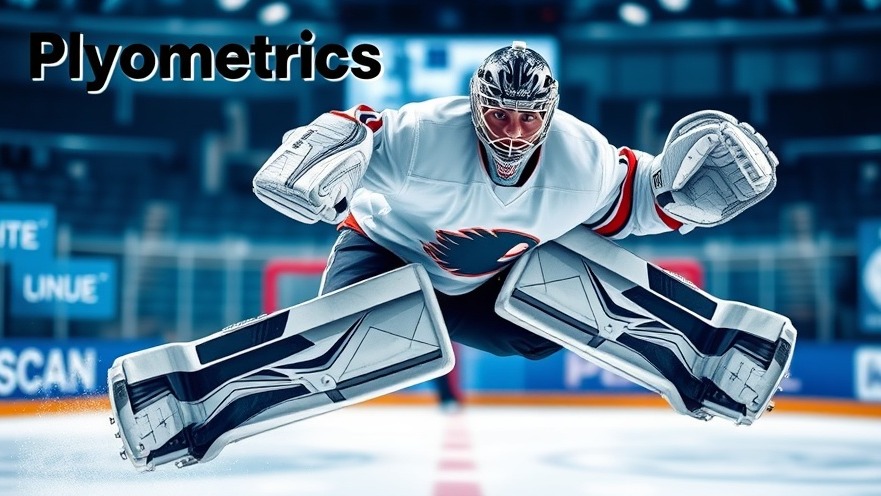
Understanding Plyometrics: More Than Just Jumping
Plyometrics are jump-based workouts designed to enhance explosiveness, balance, and proprioception among hockey players. But not all jump movements are created equal. In this article, we will clarify what plyometrics entail, how they can directly affect performance on ice, and how to implement them correctly.
In 'Plyometrics for Hockey | Don't Be Dumb', the discussion dives into essential training tips for goalies, exploring key insights that sparked deeper analysis on our end.
Plyometrics and Their Impact on Ice Performance
When done correctly, plyometrics can significantly improve skating abilities, including more explosive starts, better force absorption, and efficient stops. This is crucial for goalies, who need to make quick movements across the ice. Plyometrics focus on developing explosive power by using the stretch-shortening cycle of muscles. For instance, a well-timed jump can help a player extend their reach or push off powerfully in a new direction.
A Solid Foundation: Why Beginners Should Keep It Simple
Many hockey players, especially those new to plyometrics, often miss the mark. Instead of executing complex and flashy drills, they would benefit more from mastering basic jumps like pogo jumps and small depth jumps first. According to experts, establishing this foundation is crucial before advancing to more complicated exercises like box jumps or lateral bounds.
The Importance of Structured Progression in Plyometric Training
Implementing a well-structured program with obvious progression routes is essential for athletes. Plyometrics should never be performed in isolation; they need to be combined with other strength and skill training tailored for hockey players. Ideally, once young athletes build strength—often defined as being able to squat twice their body weight—they can safely progress into more challenging plyometric movements.
Recovery Matters: Don’t Rush the Process
A common pitfall in plyometric training is neglecting recovery time. Quality of execution should always take precedence over quantity. Athletes should allow ample time—ideally a 2:1 or even 3:1 work-to-rest ratio—between jumps to maximize performance outcomes. This strategy not only aids muscle recovery but also prevents potential injuries that can occur from muscle fatigue.
A Final Thought: A Call for Smart Training
In summary, if you’re a goalie or the parent of one, remember that plyometrics can help you enhance performance, but they come with a caveat: prioritize proper training techniques over flashy or popular social media workouts. Focus on a structured and progressive approach and always include recovery time. Consider this a preventive measure against injuries and a way to ensure that your training leads to real improvements on the ice.
To dive deeper into effective off-ice training and stay updated on valuable tips for goalies, consider subscribing to my newsletter. With information tailored for hockey players, it’s an excellent way to gain insights that could elevate your game.
 Add
Add 

 Add Row
Add Row 


 Add Row
Add Row  Add
Add 

Write A Comment